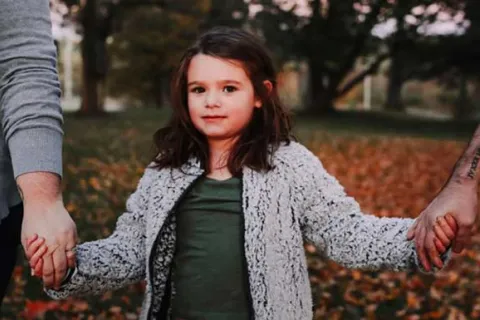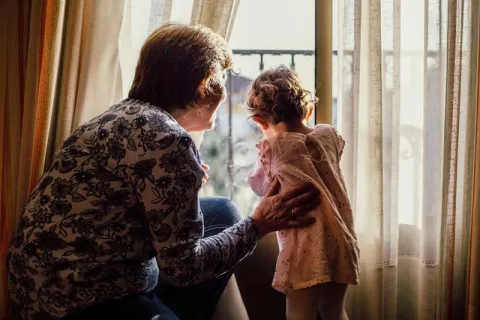Autism and fear of thunderstorms
Parents seek advice to ease child’s extreme fear of thunder
By Dr. Judy ReavenThis answer is by Judy Reaven, a clinical psychologist and associate professor of psychiatry and pediatrics at the University of Colorado School of Medicine and Children’s Hospital Colorado, in Denver. Dr. Reaven has conducted research on the effectiveness of cognitive-behavioral therapy for anxiety in children and adolescents with autism, with the support of an Autism Speaks research grant.
My son has autism and is very sensitive to noises. Recently he’s become afraid of thunder. I notice that his heart races and he sticks his fingers in his ears. We try holding him, talking to him. Sometimes it seems to work. Other times he’s so agitated he can’t sit still. Do you have any suggestions on how we can help him?
Thank you for your question. Anxiety and sensitivity to loud noises are common among people on the autism spectrum. As you and your son have experienced, this can interfere with daily life at home, in school and in the community.
The good news is that we have effective methods for easing anxiety in children and adults who have autism. These approaches are based on the principles of cognitive behavior therapy, or CBT. Cognitive-behavioral approaches are well-established, evidence-based treatments that have become the gold standard in addressing disabling fears and anxiety.
My research and that of my colleagues has demonstrated the helpfulness of modifying cognitive-behavioral approaches to address anxiety among those who have autism.
Managing fear of thunderstorms
The fear of thunder you describe may relate to the sensory sensitivities that are common among those affected by autism. In addition – like many people who have autism – your son may have difficulty telling you what’s scaring him. Instead, he may show you his fear through his physical reactions to events like hearing thunder.
In addition to the agitation you describe, other signs of extreme distress can include pacing, repetitive speech, yelling, crying and clinging. In some cases, we also see aggression and/or self-injurious behaviors.
By helping your son learn to manage his fear, you can help prepare him – not only for the next thunderstorm – but also for an unpredictable world that includes loud noises.
In addition to the general strategies below, I urge you to seek professional psychological therapy for your son’s anxiety and perhaps also occupational therapy for his sensory sensitivities if he’s not already receiving this support.
Depending on your son’s age, he may also be eligible for autism-related therapy through your state’s early intervention program or the Individualized Educational Plan (IEP) developed through his school. It’s important to share your son’s anxiety triggers with his school team and ask that they incorporate some of the strategies below as part of his school program.
Coping strategies
Key components of a cognitive behavioral approach for anxiety include coping strategies that target the body’s reaction to anxiety, as well as the thoughts that can occur when we experience a fearful situation. Body-management strategies to consider include deep breathing. In other words, you can teach your son to take slow, deep breaths to help manage his body’s physical reaction when he encounters a stressful situation.
In addition, you can teach your son to use “helpful thoughts,” or statements, that he can repeat (aloud or silently to himself) when faced with a situation that makes him anxious. For example, you might coach your son to say, “This is a loud noise. I don’t like it, but I can handle it.”
To help your son learn these strategies, I suggest you model taking deep breaths while repeating such a helpful statement aloud in response to a fearful situation.
Graded exposure
The most important component of CBT for treatment of anxiety involves helping your son face his fears a little at a time. This is called “graded exposure.” Although graded exposure may seem counterintuitive, research indicates that this approach is the single most-effective strategy for overcoming specific fears. This is best done under the supervision of a professional with training in CBT and experience with children who have autism.
For example, the therapist might explain to your son that they are going to listen to a recording of thunder with the volume turned way down. The therapist would help your son stay calm with deep breathing and reassuring statements. The therapist may also show you how to do this with your son at home. Over time, you and the therapist would gradually increase the volume as your son’s comfort with the sounds increases.
Meanwhile … if thunder booms
Of course, an actual thunderstorm may occur before your son has learned to handle his anxiety. If that happens, be sure to reassure him that you are there to keep him safe and help him use his new strategies. Be patient and be sure to praise even the slightest progress.
However, if you see your son’s fears and anxieties worsen, I urge you to avoid delay in seeking professional help. You can do this through your school district’s Individualized Educational Plan or through mental health professionals with experience in managing anxiety in young people who have autism.
Related resources:
- Managing anxiety in children with autism
- Research yields tips for easing anxiety in nonverbal kids who have autism
- How common are anxiety disorders in people with autism? Are there effective treatments?
- Contact the Autism Speaks Autism Response Team (ART)
Editor’s note: The above information is not meant to diagnose or treat and should not take the place of personal consultation, as appropriate, with a qualified healthcare professional and/or behavioral therapist.









